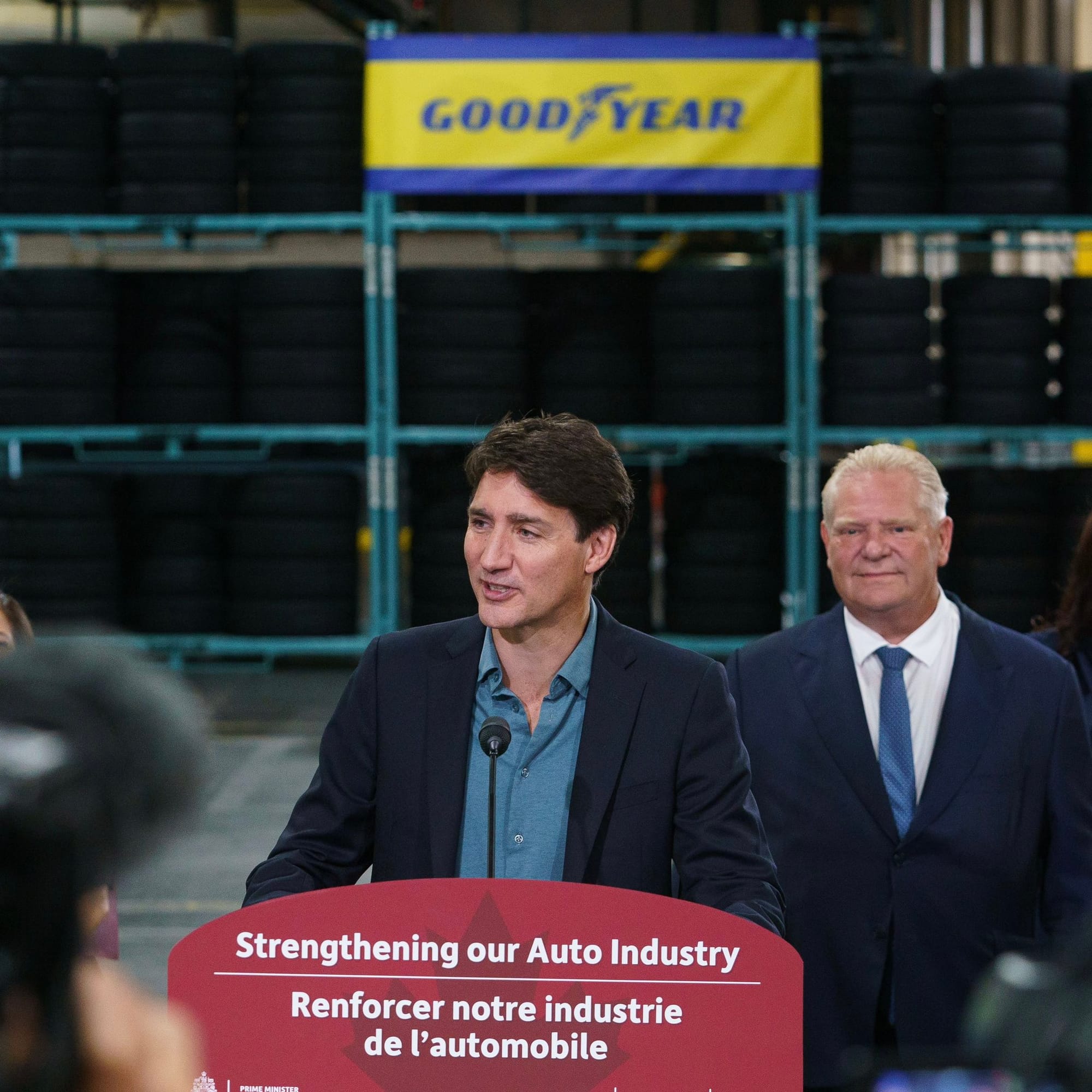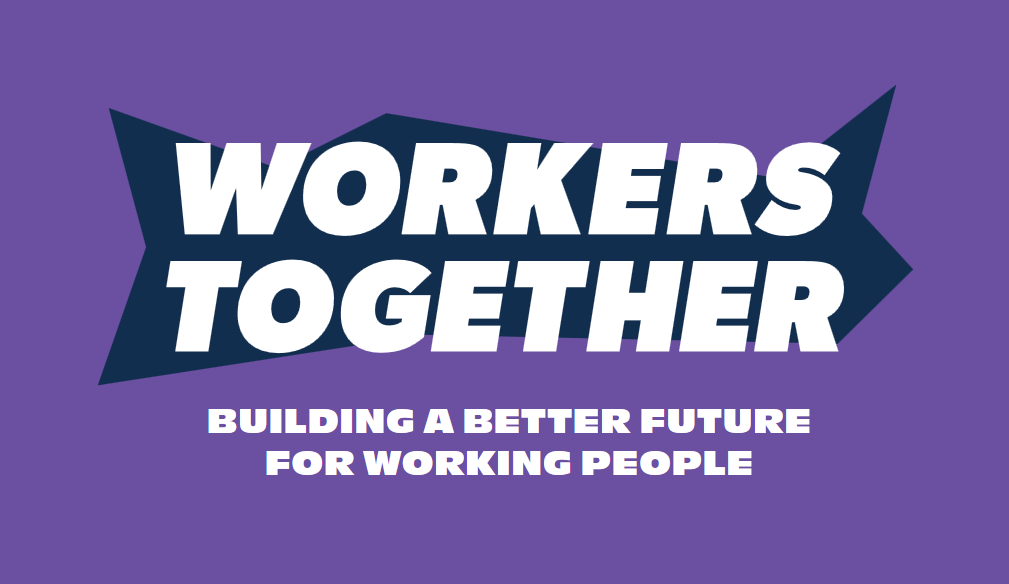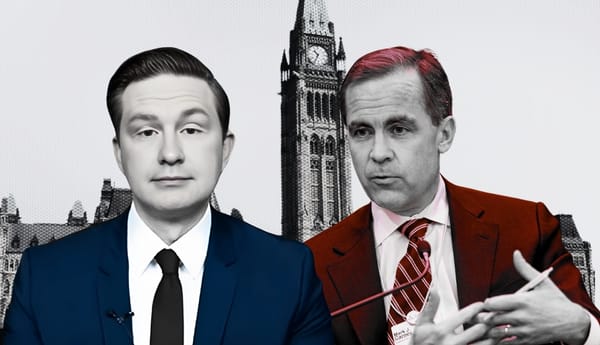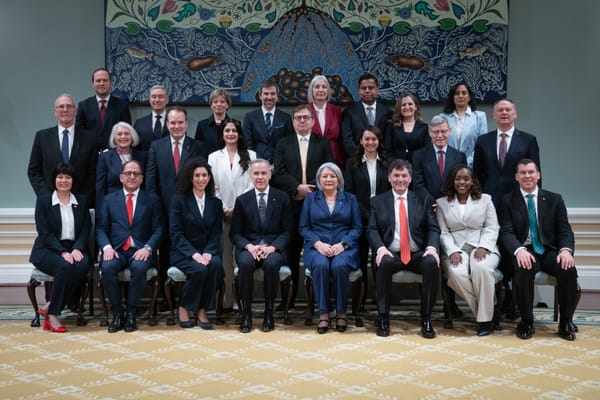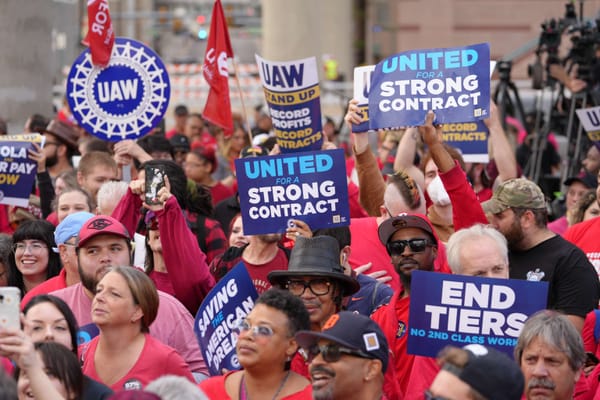
On August 12, Prime Minister Justin Trudeau and Ontario Premier Doug Ford joined local politicians in my hometown of Napanee, Ont., to announce millions in new subsidies to multinational corporation Goodyear, whose tire manufacturing plant employs roughly 800 people in the community.
Goodyear Canada plans to invest $575 million to expand its existing factory and enhance its capacity to produce new tires for electric vehicles. But as is the contemporary trend, profitable corporations don’t make investments without first bellying up to the public trough. Through its Strategic Innovation Fund, the federal government will kick in up to $44.3 million, while the province will shell out another $20 million through Invest Ontario.
The company’s CEO, Mark Stewart, was also on hand to boast of the local employment benefits of the slated investment. According to the official joint announcement from Goodyear and the governments of Canada and Ontario, this hefty subsidy will result in 200 “new, highly skilled manufacturing jobs by 2027” and an additional 1,000 indirect jobs in Napanee.
Goodyear Tire & Rubber Company is one of the world’s largest tire manufacturers, employing 71,000 people in 54 facilities in 21 countries. In 2023, the company posted net sales of over $20 billion USD.
Betting with House Money
The subsidies earmarked for Napanee are pitched as part of the federal and provincial governments’ green investment plans. As a strategic sector, auto manufacturing has received a large share of this green industrial finance. Thus far, the federal government, along with the governments of Ontario and Quebec, have promised upwards of $50 billion in subsidies to encourage foreign automakers to produce electric vehicles (EVs) and batteries in Canada.
At the same time, investor confidence has faltered as of late. Last month, Belgian company Umicore indicated it was halting construction on a planned $2.8 billion battery-material manufacturing plant in neighbouring Loyalist County amid falling consumer demand for EVs. Umicore was set to receive $551.3 million in federal funds and another $424.6 million from the Ontario government. Ford Motor Company, as well, has delayed its Oakville EV plant by two years, despite millions in promised subsidies.
Nevertheless, federal and provincial governments are sticking by their commitments to subsidize green investment. Trudeau in particular has sought to defend his support for green investment and jobs against attacks from Pierre Poilievre and the Conservatives. Much like Joe Biden’s Democratic administration in the United States, the Liberals face a populist challenge from their right that explicitly characterizes the emerging green economy as a threat to blue-collar jobs. Ensuring that a corporate-friendly green agenda is pro-worker enough to fend off electoral defeat is thus part of Trudeau’s calculation.
At Goodyear Napanee, the planned investments are meant to aid the company in setting up a more energy-efficient manufacturing process that can produce the heavier tires required for electric vehicles. The company and its government funders claim the proposed expansion will also allow Goodyear to reduce its carbon emissions at the plant 10 per cent by 2030 before reaching net-zero by 2040.
The prime minister told those in attendance at Goodyear Napanee that his government has attracted over $46 billion in investment from the titans of global capital to build out the new EV supply chain, in large part through generous taxpayer subsidies for critical mineral mining and battery and EV production.
“These global leaders have recognized all that Canada and Canadians have to offer: abundant clean energy and a commitment to serious climate action, access to critical minerals and other natural resources, stable and reliable democratic institutions, strong trade relationships spanning every corner of the globe and most importantly, the best workers in the world,” Trudeau said.
Yet public-private investments like those at Goodyear Napanee are not exactly the win-win that the prime minister characterized them as. Rather, the funding set to flow to Goodyear is a fitting illustration of the new green industrial policy at work, its blemishes apparent to anyone willing to dig beneath the celebratory headlines.
The Green ‘De-Risking’ State
Green industrial policy — all the rage as advanced capitalist countries set themselves the task of mobilizing public revenue to address the climate crisis (while also outcompeting their geopolitical rivals) — has thus far amounted to a series of public handouts to profitable corporations. Moreover, the governments embracing this new regime of green public finance have demanded little in return from the corporations directly benefiting from the opening of the public spigot. The name of the game, rather, has been to ‘incentivize’ corporate investment to address the social crisis of climate change. And it’s proving to be a risky and expensive bet.
In the U.S., the Biden Administration is pouring billions into green technology and manufacturing through the Inflation Reduction Act (IRA) and the CHIPS and Science Act. As some have suggested, the “bottomless mimosas” created by these pieces of legislation have the potential to significantly mobilize private capital, though thus far their macroeconomic impacts have been difficult to register.
What is clear is that corporate capital is being showered with public money on the promise of trickle-down social benefits. Corporations that previously gorged themselves on stock buybacks to enrich their executives and shareholders instead of making sensible long-term investments, such as Intel, are now the recipients of public largesse. As well, much of the IRA money is flowing to non-union employers in right-to-work states, an issue about which the United Auto Workers has been particularly outspoken.
How the left should respond to this reorientation of public finance has been an ongoing topic of debate. While the take-up of nascent industrial policy is in many senses a positive development insofar as it reflects an admission that neoliberalism was and is a policy dead end, what has replaced it involves much public cost with questionable returns.
When it comes to the new green investment regime, it seems change comes with plenty of continuity. In the words of economist Daniela Gabor, the new industrial policy looks much like the same old “de-risking state” whose task it was and is to incentivize, direct and perhaps most importantly, secure the profitable investment of private capital.
As Western governments have turned to “de-risking,” re- and “friend-shoring,” and generally mobilizing public finance in the hopes of encouraging climate-friendly investment, corporations are still largely calling the shots. Rather than simply abandoning neoliberalism and jettisoning the private allocation of capital, the new industrial policy ponies up government money with few strings attached.
For example, no government in Canada has even broached the subject of public ownership or a public share in the corporations receiving green subsidies and investments. And while federal funding programs do establish relatively strong labour standards and public benefit criteria, this doesn’t prevent funds from flowing to non- and anti-union employers.
Unmentioned in Trudeau’s laudatory statement about the “good-paying, fulfilling and community-building” jobs created through green public investment is how much of these subsidies have been handed out to anti-union employers, such as Goodyear.
Although the company now appears as a relatively uncontroversial fixture of the local economy in Napanee, its arrival in 1988 was anything but. As historian Bryan Palmer documented at the time, Goodyear relocated to Napanee after busting the union at its New Toronto facility and extracted considerable concessions from the local Napanee government and community in order to secure access to cheap land and non-union labour.
Nevertheless, this “exemplary corporate partner,” as current Napanee Mayor Terry Richardson referred to Goodyear, will receive another round of support from local governments.
Green De-Risking Comes To The Backcountry
While de-risking private green investment has largely been analyzed as a project of national or subnational governments, the case of Goodyear Napanee demonstrates the phenomenon’s multi-scalar nature. The town of Greater Napanee, as well as the township and county in which it is located, is also providing the corporate giant with financial incentives to the tune of $2 million.
A new municipal Industrial Community Improvement Plan (CIP) will grant Goodyear tax exemptions meant to facilitate its plant expansion and resultant job creation. Napanee’s CIP is meant to aid “industrial development by providing partial relief from the Municipal portion of the total taxes owing during start-up operations.” Despite being a powerful and established multinational corporation with 35 years of manufacturing history in the community, Goodyear is nevertheless entitled to tax preferences for its “start-up.” Furthermore, as one critic has pointed out, the full estimate for what this tax handout will ultimately cost the local government remains to be seen.
Like many small communities, Napanee is suffering from an acute shortage of affordable housing and a growing un- and under-housed population. The community has devoted limited resources to address these issues. Yet despite such pressing community needs, the town and county are set to grant a profitable multinational corporation millions in tax exemptions on the promise of relatively mild job creation.
What’s playing out in Napanee is happening in communities across North America. Governments, from the national to the local, are rolling out the red carpet for corporate capital in the name of fighting climate change.
At the same time, opening critical discussion about the limits of the new green industrial policy has been difficult. Unions in industries set to benefit from such investment understandably support it and in many cases have lobbied for it. Moreover, as the climate crisis becomes ever more dire, arguing against green investment — even if it’s funnelled through private capital — is a difficult position to sustain.
There’s no question that addressing the climate crisis requires the mobilization of public finance. Yet rather than the “big green state” that we need, we are subsidizing the private sector in the hope that corporations can be induced to avert catastrophe.
Perhaps such an arrangement is predictable when an existential threat like climate change meets the reality of a left too weak to shape our political response. Nevertheless, workers and communities deserve much better than “de-risking” the investments of the corporate elite and hoping for the best.
Recent Class Struggle Issues
- August 19 | The United Auto Workers Are Taking On Donald Trump And Elon Musk
- August 12 | The Way We Measure Unemployment In Canada Is Broken
- August 5 | How To Fix The Staffing Crisis In Manitoba’s Health-Care System
- July 29 | ‘Sandwiched’ Caregivers Show Need For Improved Welfare State


